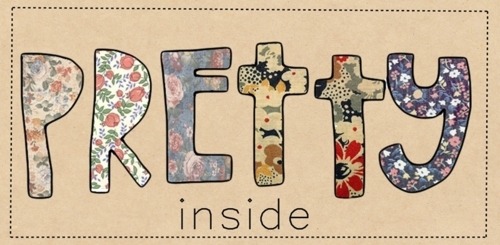|
ORAL TEST
![]()
hellO peeps ! untung la skrang tgah cuti kn?hemm homework pun berderet je . . hari isnin nanti dah start sekolah ! haishh .. rase cepat je masa berlariso , my beloved english teacher dah bg task sruh buad dan ianya WAJIBoke .. naseb baik dah siapkan teks tunggu nak hafal je pOn ~malas nak berFikir panjang buad speech jela ,,edit sikit2
CHECK THIS OUT
Good morning to my beloved english teacher madam najwa and fellow friend.
The process of communication between two peopleis very natural and we greet and exchange pleasantrieswithout thinking twice. However, when it comes to people with disabilities, for instance, the speech-impaired, the sight-impaired or the hearing-impaired, we feel some awkwardness.Many people feel uncomfortable around people with disabilities.
Here are a few suggestions on how to get around these discomforts.
When talking to disabled people, bear in mind thatthey are normal human beings. Except for their disabilities,they are no different from you or me. They do not expectanything more than being treated with the same dignity, consideration, respect and rights as any other person.
For people with physical disabilities, for example, a person in a wheelchair, offer your assistance sincerely. Ifthe offer is refused, do not insist. Do not attempt to pushthe wheelchair without asking for permission. A person'scrutches, cane, walker or any mobility aid should not bemoved without consent. If the person is accompanied bysomeone, talk to the disabled person rather than throughthe companion. When talking to the person in a wheelchair,try to talk at eye level. This shows your sincerity and respectfor the person concerned. When communicating with visually-impaired person, firstidentify yourself to put the person at ease. Touch the person'sarm sightly to indicate that you are talking to him or her.Talk facing the person and speak in a normal tone of voice.One need not shout or go too near the person. Maintain acomfortable distance. Let the person know if you are leavingas you do not want him or her to talk himself or herself.Be specific when giving directions,for example, the table is at three o'clock.
People who are hearing-impaired might have different waysof communicating. Use the medium of communication theyare accustomed to. If you do not know sign language, makeit clear. You can converse through an interpreter. But, lookat and talk to the person rather than the interpreter. Catchthe person's attention.
That's all for now. Thank you for lending me your ears.
# tittle : how to communicate with people with disabilities. ok kan?# thank god ! kena hafal teks ni .. huh# need some mOre time# credit to : my beloved dictionary
Older Post | Newer Post
I.Me.Mine

HELLO ALIENS !
Basics
ϟ Name: syahira for short
ϟ Nicks: syera || kakak || mrs.oreo
ϟ Birthday: 18th May 1996
ϟ Age: 16 going up to 17
ϟ Stay at: Triang,Pahang,Malaysia
ϟ Works as: still students at SEBUDI
ϟ Hobby: Text him # Online # Eating # Sleeping
Exchange Links?

Friends | Friends | Friends | Friends |
Friends | Friends | Friends | Friends
Thank Youu [big clap for THEM]

Template: Kimi
Basecode: Jaja
Background: Amalina
Image: We♥It
Color: ♥
Editor: syahira
ORAL TEST
![]()
hellO peeps ! untung la skrang tgah cuti kn?hemm homework pun berderet je . . hari isnin nanti dah start sekolah ! haishh .. rase cepat je masa berlariso , my beloved english teacher dah bg task sruh buad dan ianya WAJIBoke .. naseb baik dah siapkan teks tunggu nak hafal je pOn ~malas nak berFikir panjang buad speech jela ,,edit sikit2
CHECK THIS OUT
Good morning to my beloved english teacher madam najwa and fellow friend.
The process of communication between two peopleis very natural and we greet and exchange pleasantrieswithout thinking twice. However, when it comes to people with disabilities, for instance, the speech-impaired, the sight-impaired or the hearing-impaired, we feel some awkwardness.Many people feel uncomfortable around people with disabilities.
Here are a few suggestions on how to get around these discomforts.
When talking to disabled people, bear in mind thatthey are normal human beings. Except for their disabilities,they are no different from you or me. They do not expectanything more than being treated with the same dignity, consideration, respect and rights as any other person.
For people with physical disabilities, for example, a person in a wheelchair, offer your assistance sincerely. Ifthe offer is refused, do not insist. Do not attempt to pushthe wheelchair without asking for permission. A person'scrutches, cane, walker or any mobility aid should not bemoved without consent. If the person is accompanied bysomeone, talk to the disabled person rather than throughthe companion. When talking to the person in a wheelchair,try to talk at eye level. This shows your sincerity and respectfor the person concerned. When communicating with visually-impaired person, firstidentify yourself to put the person at ease. Touch the person'sarm sightly to indicate that you are talking to him or her.Talk facing the person and speak in a normal tone of voice.One need not shout or go too near the person. Maintain acomfortable distance. Let the person know if you are leavingas you do not want him or her to talk himself or herself.Be specific when giving directions,for example, the table is at three o'clock.
People who are hearing-impaired might have different waysof communicating. Use the medium of communication theyare accustomed to. If you do not know sign language, makeit clear. You can converse through an interpreter. But, lookat and talk to the person rather than the interpreter. Catchthe person's attention.
That's all for now. Thank you for lending me your ears.
# tittle : how to communicate with people with disabilities. ok kan?# thank god ! kena hafal teks ni .. huh# need some mOre time# credit to : my beloved dictionary
Older Post | Newer Post
|



